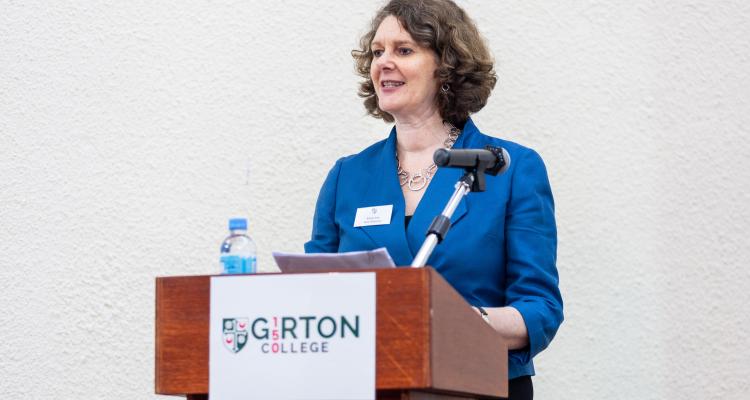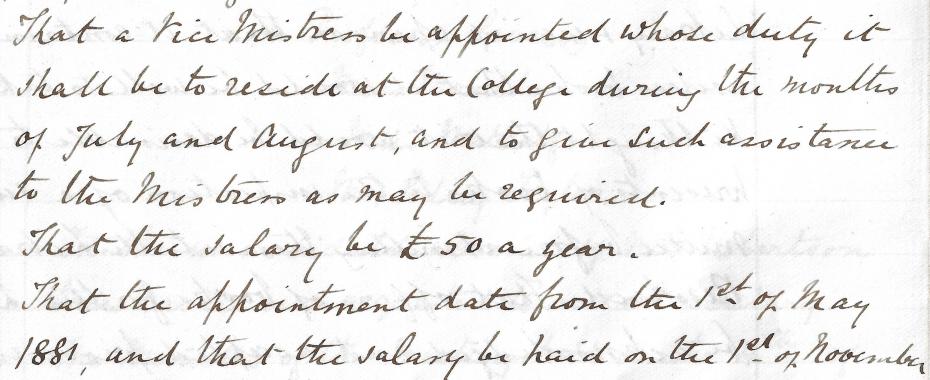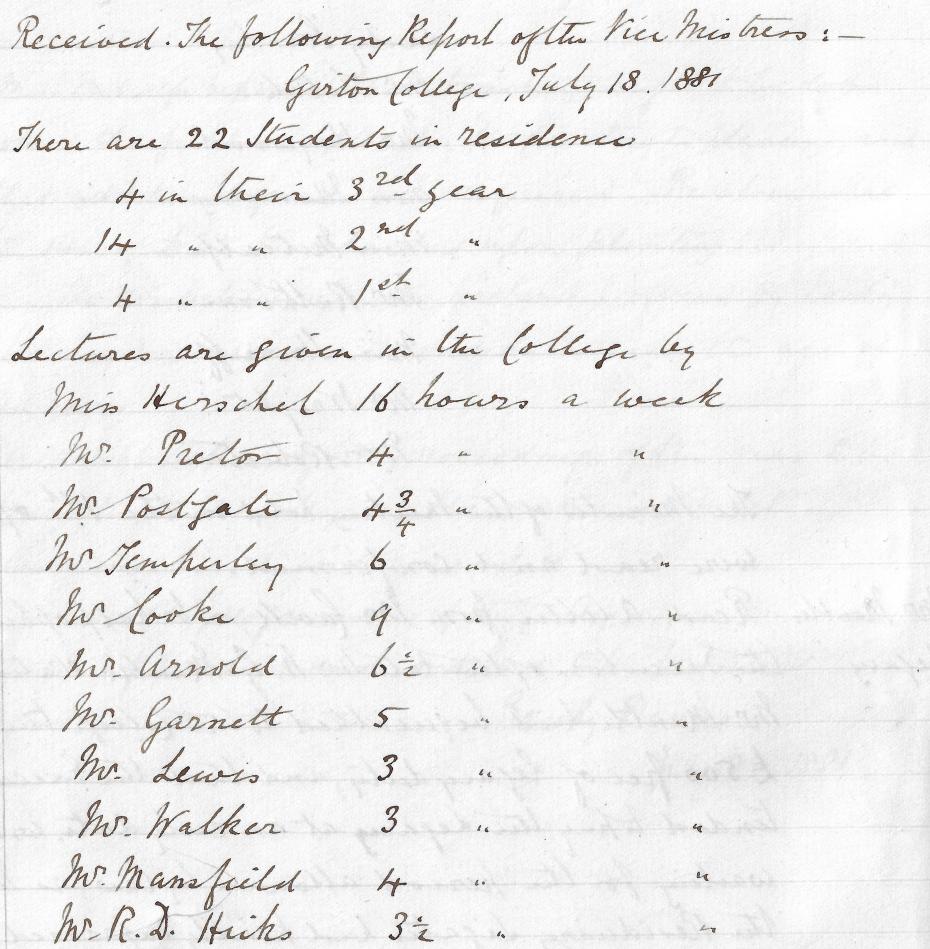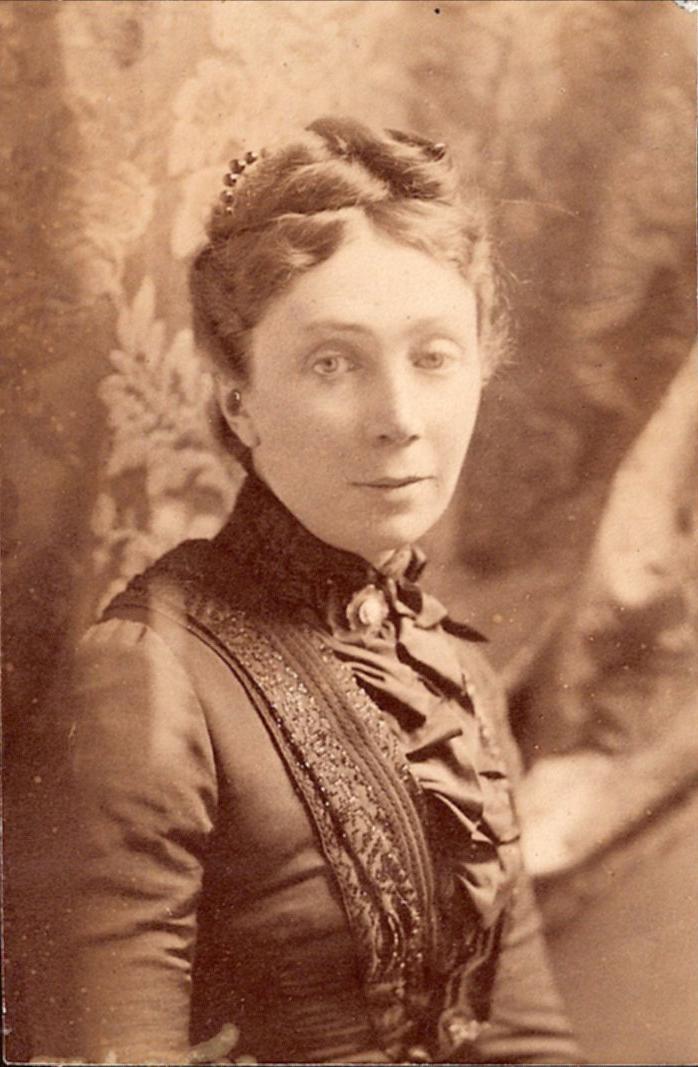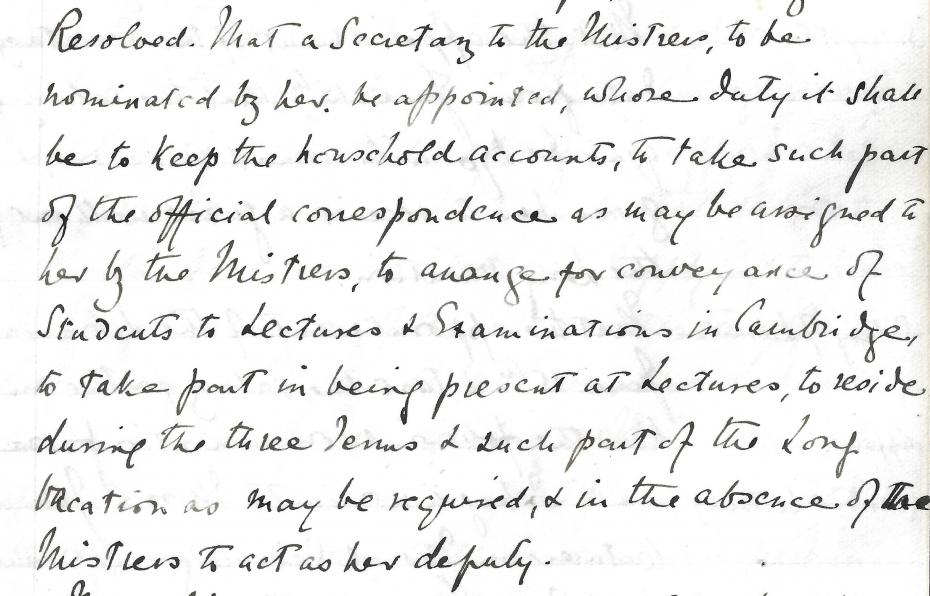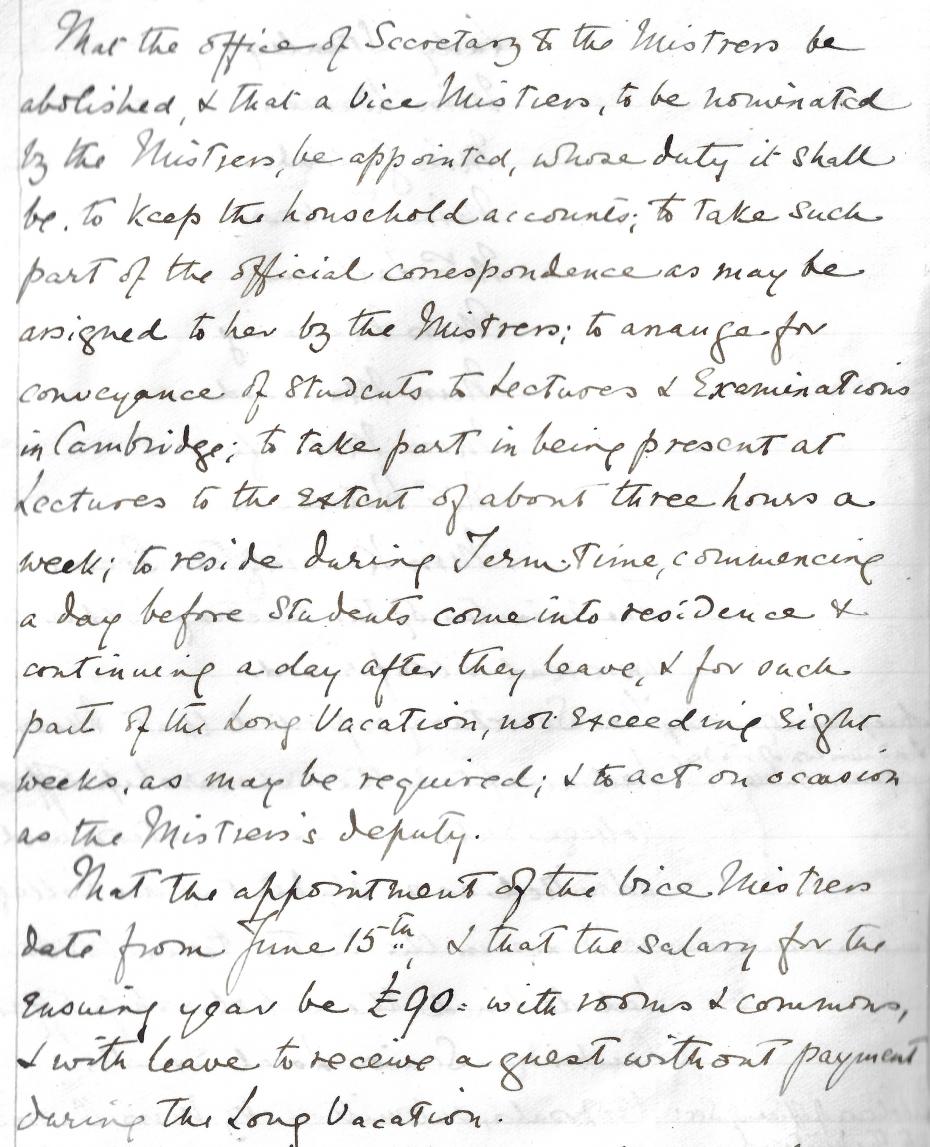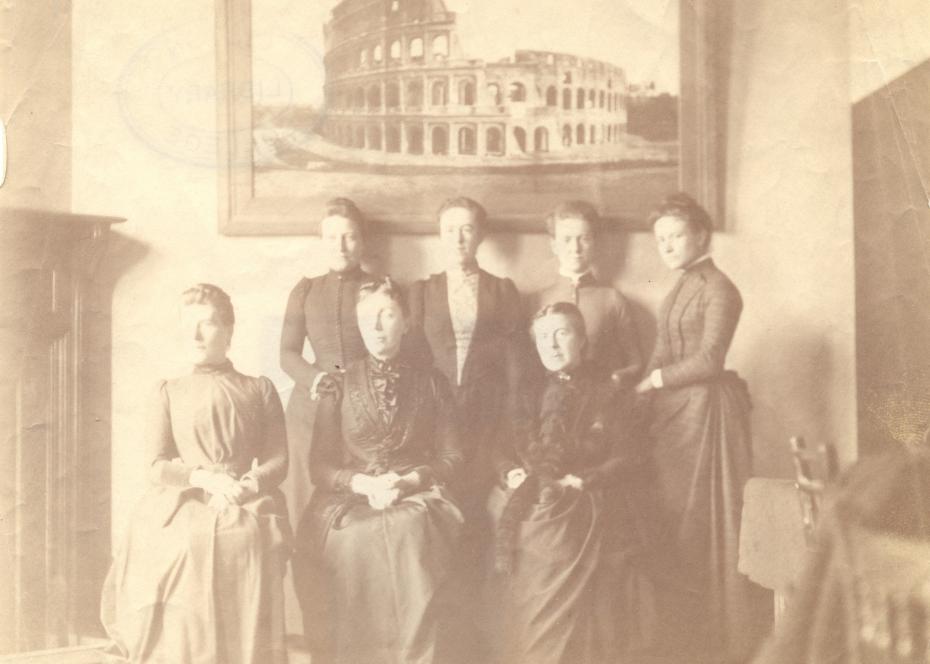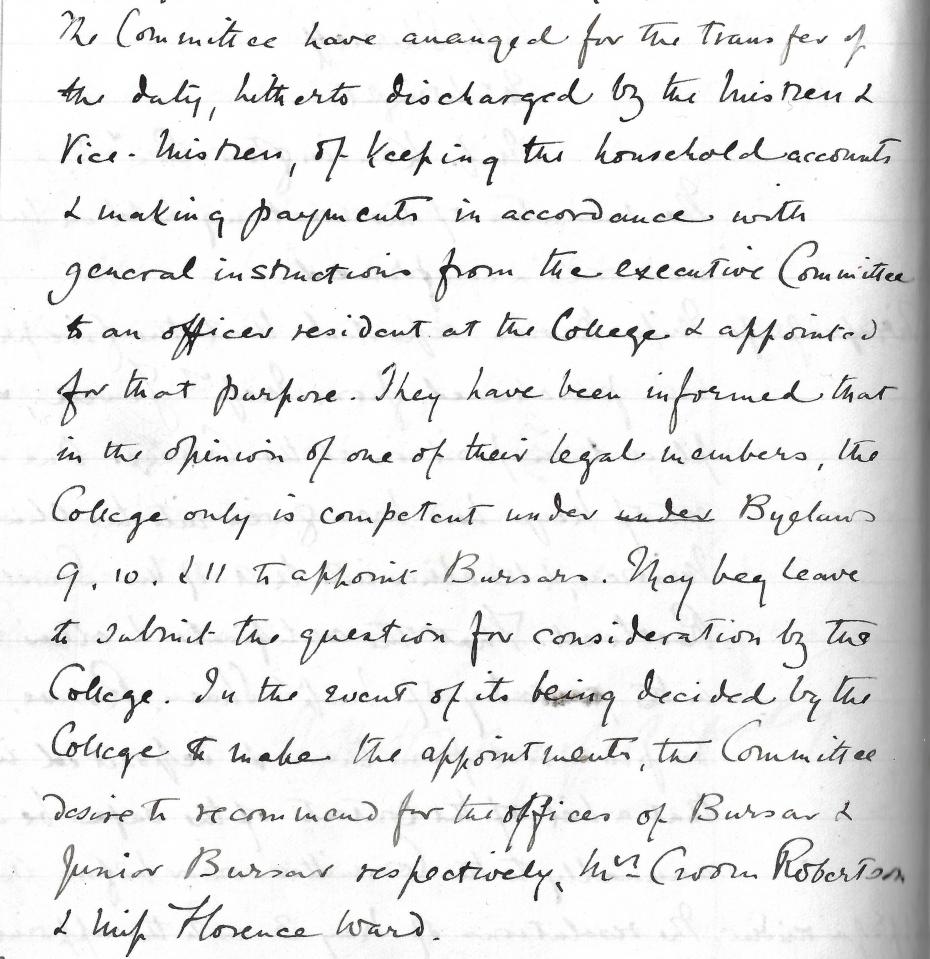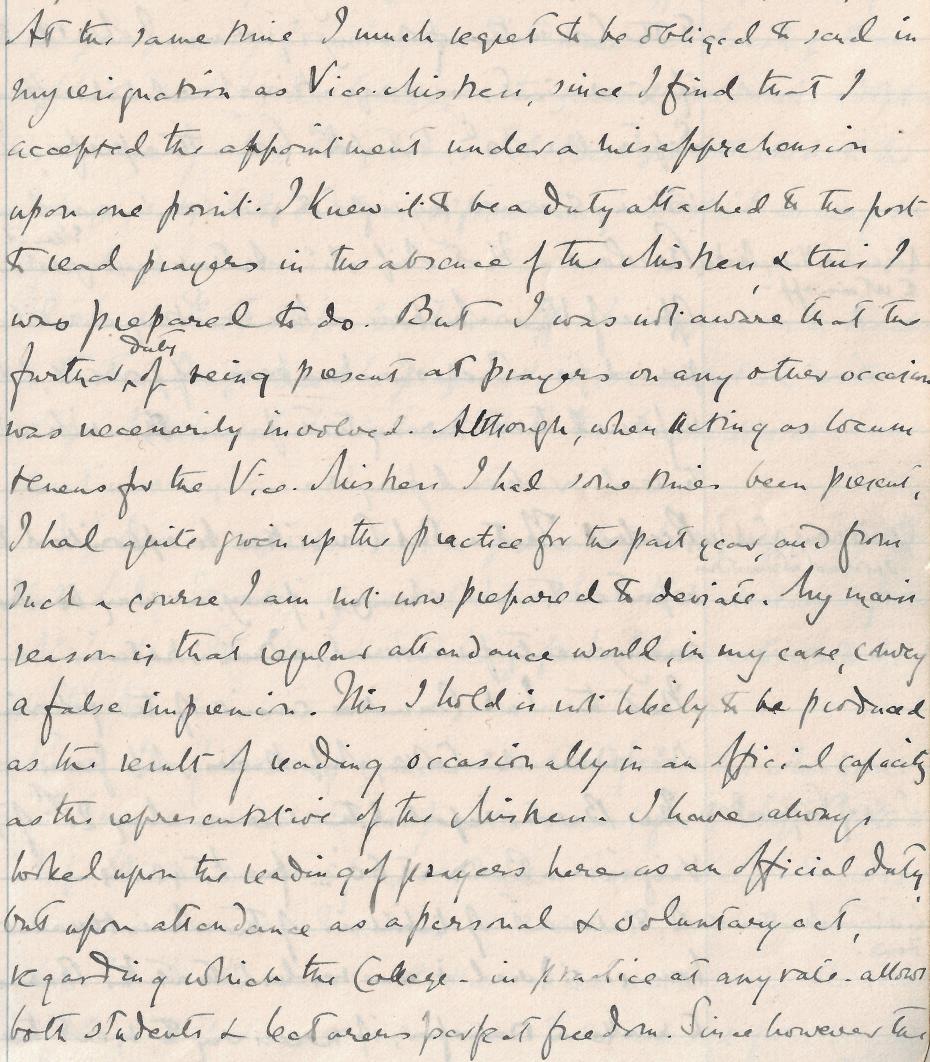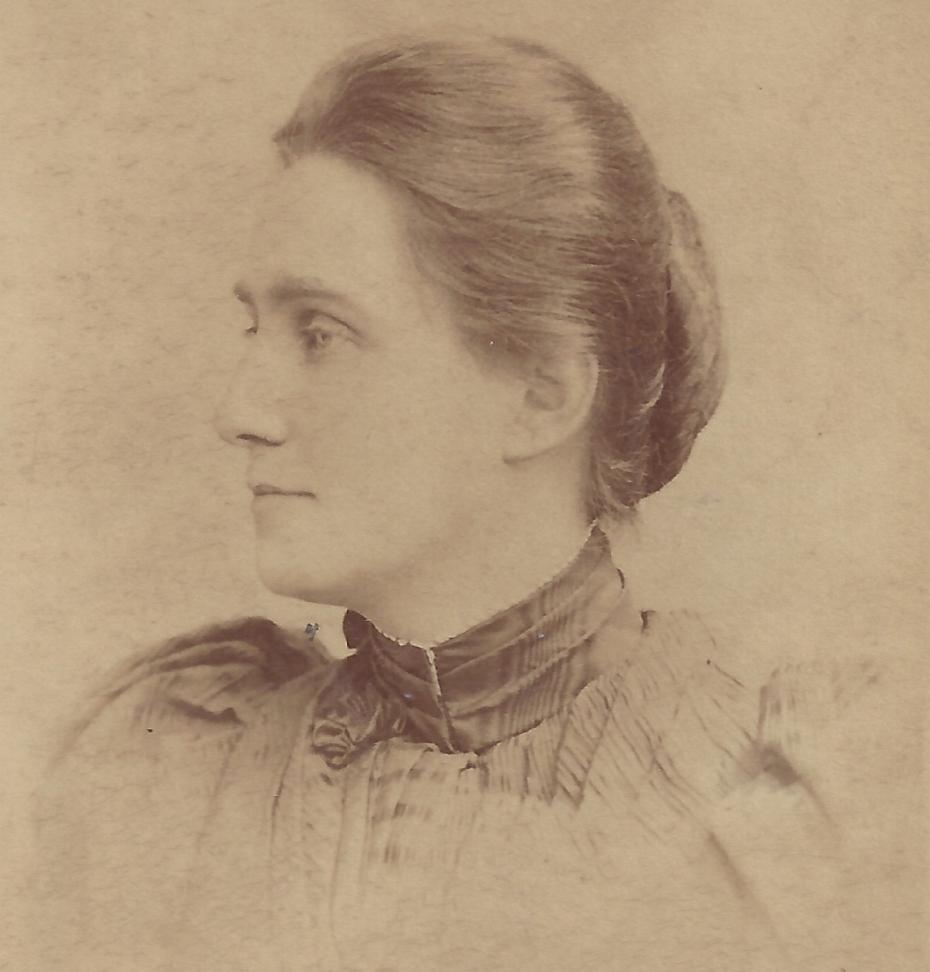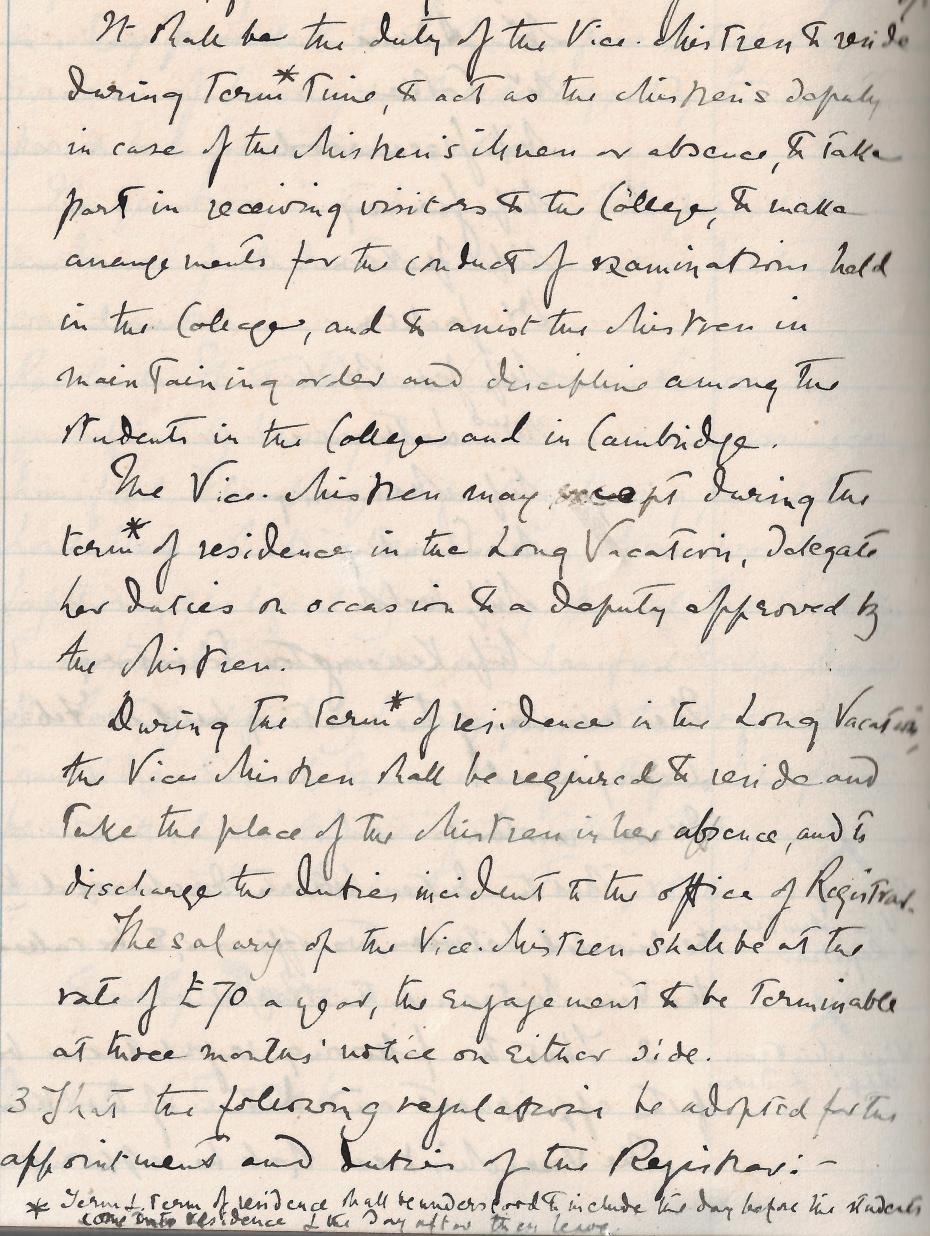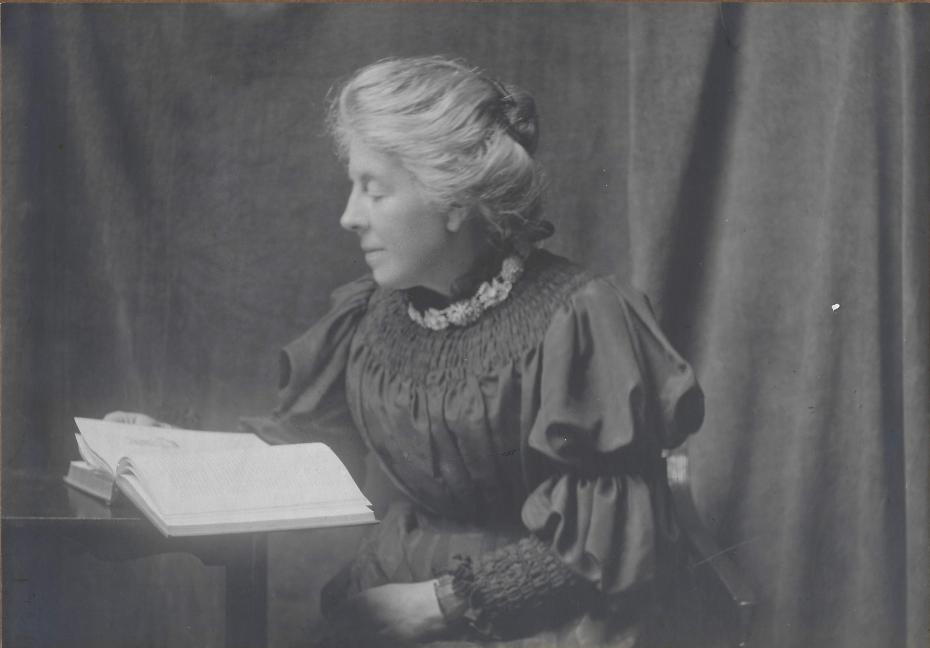Many of Girton’s Vice-Mistresses have been notable scholars, such as medieval historian Helen Cam and Muriel Bradbrook, the literary scholar and authority on Shakespeare. Only five Vice-Mistresses have been scientists, including the mathematician and physicist Bertha Jeffreys, physicist Trevor Rayment, who is the only male Vice-Mistress to date, and astrophysicist Julia Riley.
Five Vice-Mistresses would go on to become Mistress: Elizabeth Welsh, who was Vice-Mistress 1881–1885; EE Constance Jones, who was Vice-Mistress 1896–1902; Katharine Jex-Blake, who was Vice-Mistress 1903–1916; KT Butler, who was Vice-Mistress 1936–1938; and Muriel Bradbrook, who was Vice-Mistress 1962–1966. One Vice-Mistress became the head of another Cambridge College — Gillian Beer, renowned scholar of English literature, was President of Clare Hall, 1994–2001.
Several Vice-Mistresses served the College by holding many other offices, often concurrently. Eleanor Allen, for example, over a period of 29 years would serve as Junior Bursar, Librarian, Registrar, Garden Steward, Bursar, as well as Vice-Mistress. She even served as Acting Vice-Mistress, 1909–1916, although this post appeared to be short lived and went into abeyance.
During the mid-1930s to the mid-1940s, there were several Vice-Mistresses who only served for two years or fewer. Marjorie Hollond was perhaps the shortest serving, having been forced to resign from the post due to war work in London. Her successor, Frances Smith, handed in her notice after 2 years, citing the pressure of work. Only one Vice-Mistress served twice – Gillian Jondorf, who was Vice-Mistress for 11 years in total, albeit with a 13-year gap in between her two periods in office. The outgoing Vice-Mistress, Karen Lee, is the only Lawyer elected to the Office, and it is fitting that she was able to support the Visitor, then-President of the Supreme Court of the United Kingdom, during the many College events put on to mark 100 years of Women in Law.
From a post that was introduced to oversee students during the Long Vacation and to cover the Mistress’s absences, there is no doubt this important office has evolved very considerably over the decades since 1881. It now includes an important ambassadorial role and its successive incumbents have been immeasurably important in shaping the character and achievements of the College.

